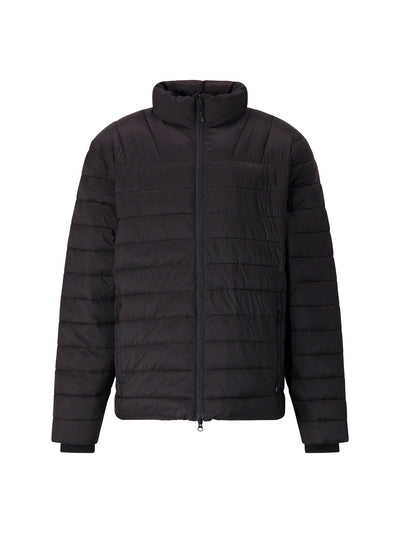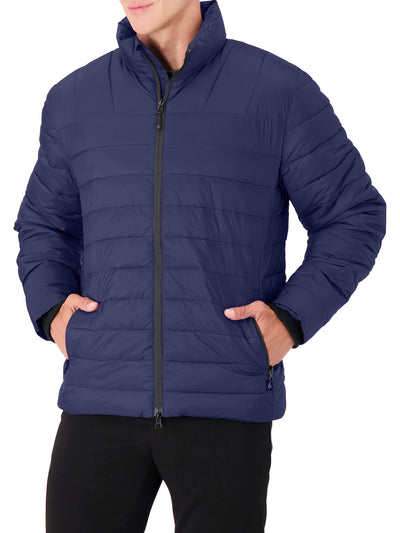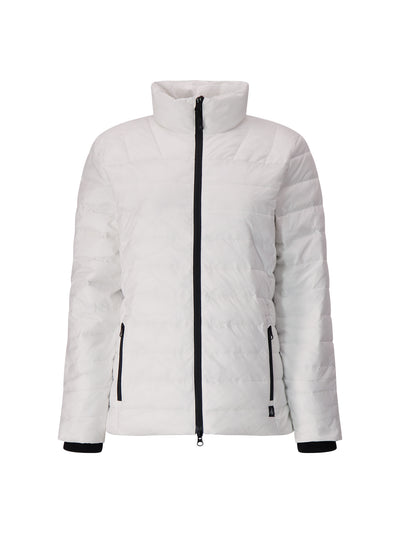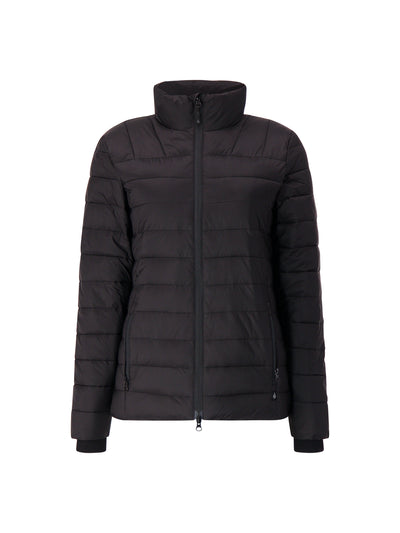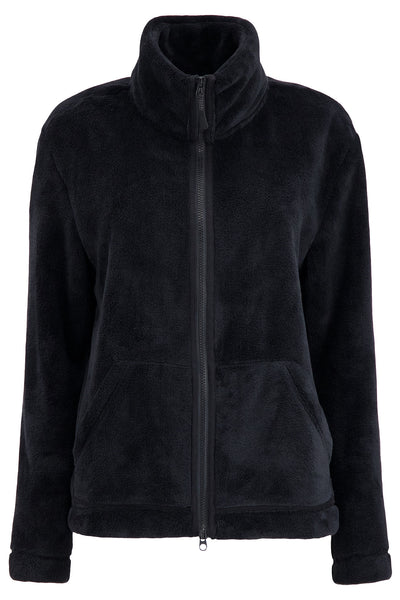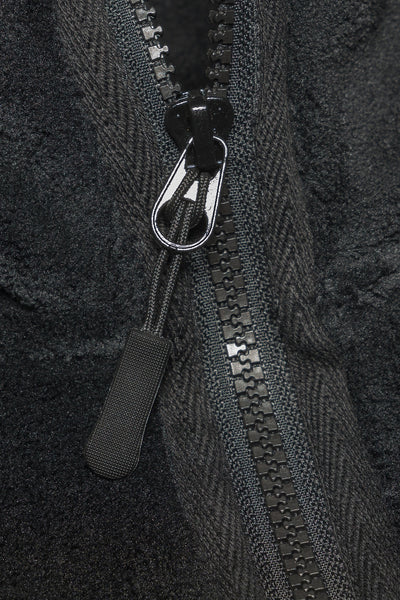Puffer jackets have become a popular choice for outdoor enthusiasts and casual wearers alike due to their warmth and style. However, one common question arises: Are puffer jackets waterproof? Understanding the materials, construction, and waterproofing technology behind puffer jackets can help you make informed decisions for your outerwear needs. In this article, we’ll explore the intricacies of puffer jackets and their relationship with water resistance.
Understanding Puffer Jackets
Puffer jackets are insulated coats that contain down or synthetic fibers. Their signature quilted appearance not only adds to their aesthetic appeal but also serves a practical purpose—trapping heat and providing insulation. There are two primary types of insulation used in puffer jackets: natural down, which is lightweight and compressible, and synthetic variations which offer similar warmth and better performance in wet conditions.
Materials Used in Puffer Jackets
The outer fabric of puffer jackets typically consists of nylon or polyester, which provides durability and lightweight comfort. These materials often come with a water-repellent treatment, which helps resist moisture and light rain. The insulation, whether natural or synthetic, is encased in this fabric, contributing to the jacket’s overall insulated performance.
Commonly used down insulation is known for its warmth-to-weight ratio, making it an excellent choice for colder climates. On the other hand, synthetic insulation has gained popularity for its moisture-wicking properties and ability to retain warmth even when wet. Some brands have even begun to incorporate recycled materials into their synthetic insulation, appealing to environmentally conscious consumers who are looking to reduce their carbon footprint while still enjoying high-performance outerwear.
Heat Holders® Puffer jackets are also made with HeatWeaver™ lining which is an exceptional thermal lining that's super soft and incredibly warm.
Construction of Puffer Jackets

Puffer jackets are typically constructed using a method called “baffling,” which involves sewing compartments that hold the insulation in place. This baffle construction helps prevent the insulation from shifting, ensuring even heat distribution throughout the jacket. Additionally, many puffer jackets feature adjustable hoods, cuffs, and hems, enhancing their fit and functionality.
Understanding the construction details can help consumers identify jackets that not only provide warmth but also durability and performance against the elements. Moreover, some modern puffer jackets incorporate innovative technologies such as breathable membranes that allow moisture to escape while still keeping cold air out. This feature is particularly beneficial for those engaging in high-energy activities like skiing or hiking, where temperature regulation is crucial. Furthermore, advancements in design have led to sleeker silhouettes that make puffer jackets not only practical but also stylish, allowing wearers to transition seamlessly from outdoor adventures to urban settings.
The Concept of Waterproofing
Waterproofing is a key consideration for outerwear, especially in regions prone to rain or snow. It's important to discern between water-resistant and waterproof garments, as these terms often cause confusion among consumers. True waterproof materials prevent water from penetrating the fabric, while water-resistant fabrics allow some moisture to pass through while providing a degree of protection. This distinction is crucial for those who engage in outdoor activities, as the right choice can significantly impact comfort and performance during adverse weather conditions.
Moreover, the technology behind waterproofing has evolved significantly over the years. With advancements in fabric technology, many manufacturers now utilize innovative materials that not only offer superior waterproofing but also enhance durability and flexibility. For instance, some modern waterproof jackets are made with advanced synthetic fibers that are lightweight yet incredibly strong, allowing for greater mobility without sacrificing protection. This has led to a surge in popularity for outdoor sports enthusiasts who require gear that can withstand the elements while still being comfortable to wear for extended periods.
What Does Waterproof Mean?
In technical terms, waterproof refers to materials that can withstand a specific water pressure without leaking. Waterproof garments usually come with a hydrostatic head rating, which measures how much water pressure the fabric can resist before it starts to seep through. For instance, a fabric with a hydrostatic head rating of 20,000 mm is considered highly waterproof, suitable for heavy rain. This rating is particularly important for those who participate in activities such as hiking, skiing, or mountaineering, where exposure to wet conditions is common and can lead to hypothermia or discomfort if not properly managed.
Additionally, the construction of waterproof garments often includes features such as sealed seams and waterproof zippers, which further enhance their protective qualities. These elements work together to create a barrier against water ingress, ensuring the wearer remains dry even in the most challenging environments. Understanding these technical specifications can empower consumers to make informed decisions when selecting their outerwear.
Different Levels of Waterproofing
Waterproofing can be categorized into several levels, often referred to as ratings:
- Water-Resistant: Fabrics that can repel light rain but may not hold up under consistent exposure.
- Waterproof: Fabrics designed to provide full protection against water penetration.
- Waterproof and Breathable: These fabrics combine waterproofing technology with breathability, allowing moisture from inside the jacket to escape while preventing rain from entering.
Understanding these levels can aid consumers in selecting the appropriate jacket for their specific weather conditions. For example, a water-resistant jacket might suffice for a casual stroll in light drizzle, while a waterproof and breathable option would be essential for a day-long hike in a torrential downpour. Furthermore, many brands now offer detailed guides and customer support to help individuals choose the right level of waterproofing based on their intended use, making it easier than ever to find the perfect outerwear for any adventure.
Puffer Jackets and Water Resistance

While many puffer jackets are designed with water-resistant fabrics, not all are truly waterproof. Understanding how these jackets react to water is essential for any user, especially in scenarios where they may get caught in the rain.
How Puffer Jackets React to Water
Generally, the outer fabric of a puffer jacket will shed light rain or snow due to its water-repellent finish. However, prolonged exposure to heavy rain can overwhelm the jacket's water-resistant capabilities, leading to saturation and loss of insulation effectiveness.
This saturation can compromise the jacket's ability to keep you warm, as wet insulation loses its thermal properties. Knowing this can help individuals prepare better for their outdoor ventures. For instance, if you anticipate spending extended periods in wet conditions, layering with a waterproof shell or opting for a fully waterproof puffer jacket can be a wise choice. Additionally, understanding the weather forecast before heading out can inform your decision on which jacket to wear, ensuring you stay comfortable and dry.
Factors Affecting the Water Resistance of Puffer Jackets
Several factors play a role in how well a puffer jacket can resist water:
- Quality of Fabric: Higher-quality outer fabrics tend to have better water-resistant properties.
- Maintenance: Regularly washing and treating the jacket can help maintain its water-repellent finish.
- Fit and Closure: Jackets with adjustable cuffs, hems, and storm flaps provide better coverage against water intrusion.
Awareness of these factors allows wearers to maximize the effectiveness of their puffer jackets. Furthermore, the type of insulation used can also influence performance; for example, down insulation can lose its warmth when wet, while synthetic alternatives tend to retain insulating properties even when damp. This makes it crucial for consumers to consider their specific needs and the environments they will face. Additionally, many brands now offer innovative treatments and technologies that enhance water resistance, such as DWR (Durable Water Repellent) coatings, which can significantly improve the jacket's performance in wet conditions.
Enhancing the Waterproofing of Your Puffer Jacket
If you own a puffer jacket and want to enhance its waterproofing capabilities, there are several methods to consider. These treatments help maintain the integrity and functionality of the jacket in wet conditions.
Waterproofing Treatments for Puffer Jackets
There are numerous products available for treating your puffer jacket. Typically, these come in spray or wash-in forms and work by revitalizing the fabric's water-repellent coating. These treatments can help repel water and aid in maintaining breathability.
When applying a waterproofing treatment, it's essential to follow the manufacturer's instructions carefully for optimal results. Many of these products contain fluorocarbon compounds that create a barrier against moisture, ensuring your jacket remains dry even in heavy rain. Additionally, some treatments offer UV protection, which can help prevent fading and degradation of the fabric over time, making them a worthwhile investment for anyone looking to extend the life of their outerwear.
Maintenance Tips for Prolonging Waterproofing
Proper care and maintenance can significantly prolong the waterproofing of your puffer jacket:
- Wash the jacket using a gentle cycle with a specialized detergent that is free from additives.
- Avoid using fabric softeners, as they can interfere with the jacket's breathability.
- Dry the jacket on low heat to restore its loft and water-repelling properties.
In addition to these washing tips, it's also beneficial to store your puffer jacket properly when not in use. Avoid compressing it into tight spaces, as this can damage the insulation and reduce its effectiveness. Instead, hang it in a cool, dry place, allowing the fabric to breathe. Furthermore, consider inspecting your jacket regularly for any signs of wear and tear, such as frayed seams or damaged zippers, which can compromise its waterproofing. Addressing these issues promptly can prevent larger problems down the line and ensure your jacket remains a reliable companion during your outdoor adventures.
Alternatives to Puffer Jackets for Wet Conditions
If you find yourself frequently in wet conditions, you may want to consider alternatives to puffer jackets that offer superior waterproof capabilities. While puffer jackets provide warmth, other options may be more suitable for rainy weather.
Recommended Waterproof Jackets
Here are some alternatives to consider when seeking waterproof jackets:
- Rain Jackets: Lightweight and designed specifically for wet weather, they often feature waterproof and breathable fabrics.
- Shell Jackets: These protect from wind and rain without insulation, making them a flexible choice for layering.
- Hybrid Jackets: Combining insulation with waterproofing technologies, these jackets can be ideal for cold, wet climates.
Choosing the Right Jacket for Your Needs
When selecting a jacket, consider the following factors:
- Intended Use: What activities will you be engaging in? Hiking, skiing, or daily wear?
- Weather Conditions: Are you expecting rain, snow, or both?
- Layering Needs: Consider how much insulation you'll need based on your activities and outdoor temperatures.
Making an informed decision based on your specific needs will ensure you choose the best outerwear for your adventures.
Heat Holders® Warmth and Waterproof Puffer J
Heat Holders® has developed a superior puffer jacket that is winter and waterproof and is lined with our signature HeatWeaver™ lining, that's super-soft and traps warm air next to the skin, keeping your warmer for longer.
Check out Heat Holders® full line of jackets including thermal puffer jackets for men and women. Stay warm and dry all winter long Happy shopping!



